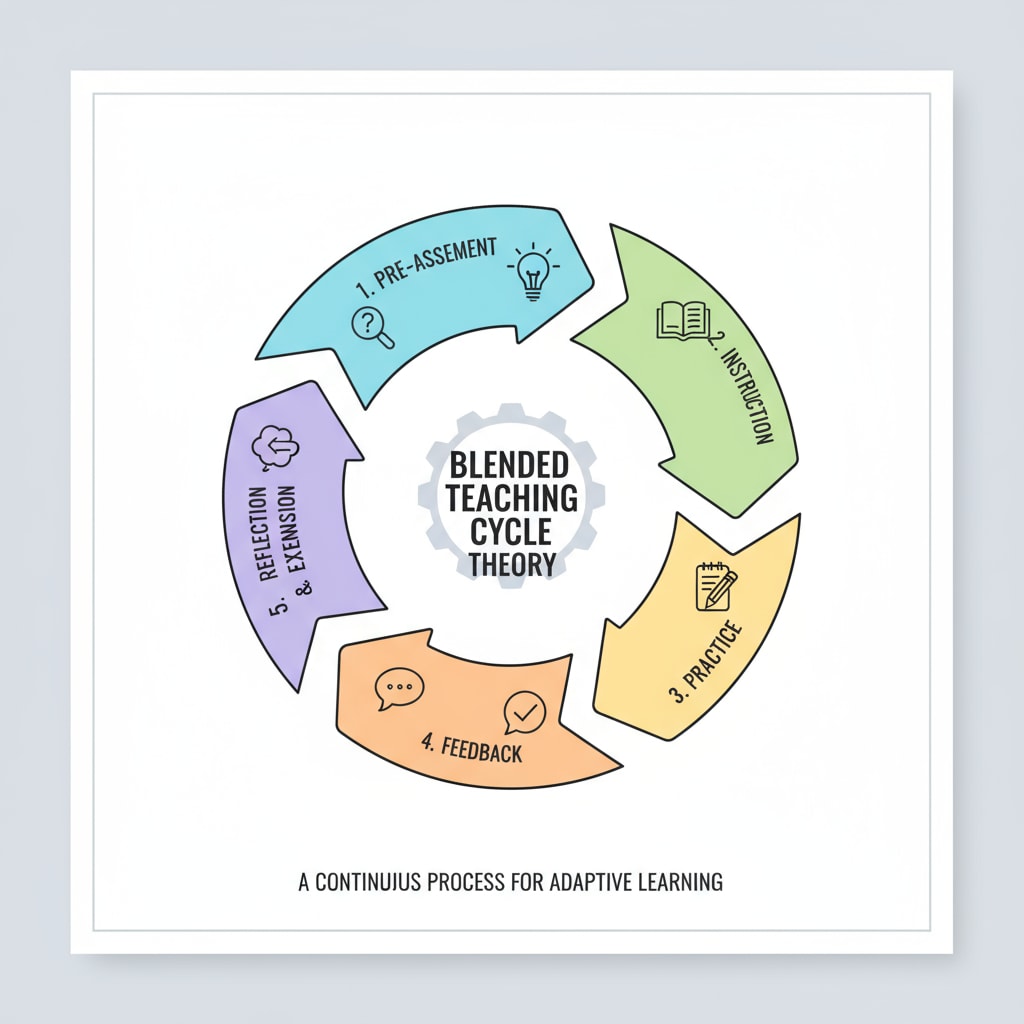The Blended Teaching Cycle Theory is an innovative educational model that effectively combines traditional instructional methods with modern facilitated learning approaches, revolutionizing the landscape of K12 education. This theory provides a framework that not only focuses on the transfer of knowledge but also encourages students’ active exploration.

The Five – Step Cycle Process
The Blended Teaching Cycle Theory consists of a five – step cycle. First is the “Pre – assessment” phase. Here, educators gauge students’ prior knowledge and skills. This step is crucial as it allows teachers to tailor the subsequent instruction according to the students’ starting points. For example, a math teacher might give a short quiz to determine what algebraic concepts students already understand before starting a new unit.
Secondly, the “Instruction” phase involves the traditional aspect of teaching. Teachers present new information, explain concepts, and demonstrate procedures. They use textbooks, lectures, and multimedia resources to convey knowledge.
Next is the “Practice” phase. Students get hands – on experience applying what they have learned. This could be through in – class exercises, group projects, or online simulations.
The “Feedback” phase follows. Educators provide constructive feedback to students, highlighting areas of strength and areas that need improvement. This feedback can be both formative, guiding ongoing learning, and summative, evaluating overall performance.
Finally, the “Reflection and Extension” phase encourages students to think about what they have learned and how they can extend their knowledge. It might involve students writing a reflection paper or exploring related topics independently.

Theoretical Foundations
This theory draws on multiple theoretical foundations. Cognitive constructivism, for instance, emphasizes that learners construct their own knowledge. In the context of the Blended Teaching Cycle Theory, the practice and reflection phases allow students to actively build on their existing knowledge structures. Social learning theory also plays a role. The group work and collaborative aspects in the practice phase enable students to learn from each other, observing and imitating behaviors and strategies. Additionally, the use of technology in modern facilitated learning is supported by the theory of educational technology, which focuses on how digital tools can enhance the learning experience. Cognitive constructivism on Wikipedia Social learning theory on Britannica
Readability guidance: Each step in the cycle has its own significance, contributing to the overall effectiveness of the Blended Teaching Cycle Theory. The cycle is designed to be iterative, allowing for continuous improvement in students’ learning. However, implementing this theory also has its own set of challenges and limitations.
Implementation Advantages
One of the major advantages of implementing the Blended Teaching Cycle Theory is that it caters to different learning styles. The combination of traditional instruction and facilitated learning provides options for visual, auditory, and kinesthetic learners. For example, the instruction phase might appeal to auditory learners through lectures, while the practice phase with hands – on activities benefits kinesthetic learners.
It also promotes student engagement. The active exploration in the practice and reflection phases encourages students to take ownership of their learning. Moreover, the feedback phase helps students stay motivated by providing clear directions for improvement.
In addition, this theory allows for better integration of technology in the classroom. Digital tools can be used in various phases, such as online assessment in the pre – assessment phase, multimedia resources in the instruction phase, and virtual simulations in the practice phase.
Limitations
Despite its many advantages, the Blended Teaching Cycle Theory has some limitations. One challenge is the need for significant teacher training. Educators need to be proficient in both traditional teaching methods and modern facilitated learning techniques. This requires time and resources for professional development.
Another limitation is the potential for technological issues. Since the theory heavily relies on digital tools, problems such as internet connectivity or software glitches can disrupt the learning process.
Finally, the individualized nature of the cycle might be difficult to manage in large classrooms. Ensuring that each student receives adequate attention and feedback can be a daunting task for teachers.
In conclusion, the Blended Teaching Cycle Theory, as an educational model that combines instruction and facilitated learning, offers great potential for enhancing K12 education. While it has its limitations, with proper planning, teacher training, and resource allocation, it can be effectively implemented to meet the diverse learning needs of students.


